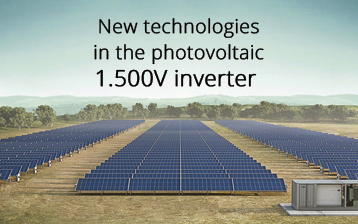The technological race does not spare the inverter manufacturers that, in recent years, have achieved unexpectedly high efficiency performances, reaching values of 98-98.5%.
For string inverters, the tendency in the short and medium term is to equip them with the possibility of connecting batteries and reducing self-consumption and internal losses even further, also using innovative semiconductors such as SiC and GaN.
Longer strings reduce costs
For inverters for large systems, the tendency is to raise the input voltage to 1,500V. This gives the opportunity to create longer strings, with a consequent reduction in connection and control panel, and still aiming to improve efficiency.
Another aspect, that is boosted by the increase in voltage, is the possibility of increasing the DC/AC power ratio, which benefits the constancy of the power produced also for considerable variations in irradiation.
A properly sized system for a 1.500V voltage can lead to savings of up to 10% of the cost (BoS).
An already consolidated market
This type of inverter is suitable for medium-large sized plants and has already established itself in countries such as the Middle East and North Africa, but is also spreading to Europe and the USA.
In 2018, medium-large 1.500V inverters composed the 50% of the total production.
It is not only the inverter that must allow an input voltage of 1.5kV, but also the external components. These involve the photovoltaic modules, from the fuses and switches, must be coordinated.
(SiC) Silicon carbide & (GaN) Gallium nitride
These innovative materials have only recently been produced on an industrial scale and are also used in converters of photovoltaic inverters.
The advantage that can be obtained from these materials is a higher frequency of use, therefore lower losses and lower volume of the inverter.






